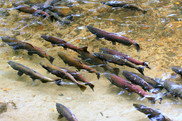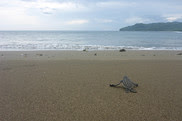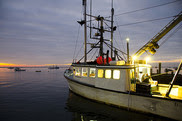|
Highlights

In response to the spread of COVID-19, NOAA Fisheries issued an emergency action to provide the authority, on a case-by-case basis, to waive observer coverage, some training, and other program requirements while meeting conservation needs and providing an ongoing supply of fish to markets. We are taking this emergency action to protect public health and to ensure the safety of fishermen, observers, and others.
|

The National Fish and Wildlife Foundation and NOAA’s Marine Debris Program today announced $8.2 million in six new grants for the assessment, removal, and proper disposal of marine debris that was caused by hurricanes Michael and Florence in Florida and North Carolina and by Typhoon Yutu in the Northern Mariana Islands. Contributions from the grantees will bring the total conservation impact to nearly $8.6 million.
|
|
|
Alaska

From Southeast Alaska to the Bering Sea, Alaska fishermen are heading out to catch halibut with the March 14 opening of the 2020 halibut season. This season’s regulations were adopted at the annual meeting of the International Pacific Halibut Commission last month. They are included in a final rule NOAA Fisheries filed with the Federal Register.
|
|
|
West Coast

A new study shows that two important indicators for understanding and predicting the effects of climate variability on eastern North Pacific marine ecosystems are less reliable than they were historically. This finding has important implications for fisheries and ecosystem management from Alaska to California.
|
|
|
Pacific Islands

The Hawaiian monk seal population has shown some signs of recovery in recent years. The size of the monk seal population in 2019 was about the same as in 2018, with slightly more than 1,400 seals.
|

The Pacific Islands Fisheries Science Center established a new partnership with The Nature Conservancy and visited important nesting beaches in the Solomon Islands. The new partnership with The Nature Conservancy and other organizations is working to recover this endangered population.
|
|
|
Southeast

To avoid in-person gatherings in light of the COVID-19 pandemic, the South Atlantic Fishery Management Council will hold upcoming meetings of its advisory panels and the Council's Scientific and Statistical Committee and Socio-Economic Panel via webinar. Council staff continue to work on the Council's business through telecommuting, conference calls, and webinars to help reduce the spread of COVID-19.
|

Proschkinia browderiana, a type of algae new to science, was recently named after NOAA Fisheries scientist Dr. Joan Browder. This new species was found in the NOAA Biscayne Bay Habitat Focus Area off Miami as part of the epiphytic algae growing on seagrass in nearshore areas of the Bay.
|
|
|
Greater Atlantic

As part of our response to the COVID-19 pandemic, NOAA Fisheries is temporarily waiving the requirement for vessels with Northeast fishing permits to carry a fishery observer or at-sea monitor. The waiver will be in effect through April 4, and future extensions of this waiver will be evaluated weekly.
|

Scientists in the northeast are using environmental DNA (eDNA) to identify fish communities and monitor ecosystems. For the first time, NOAA Fisheries scientists have sampled for eDNA in Long Island Sound and across a broad area of the Atlantic continental shelf.
|

During Women's History Month we caught up with Jennifer Goebel, Public Affairs Officer for the Greater Atlantic Regional Fisheries Office, to learn more about the work she does to support NOAA Fisheries' mission.
|

In 2019, we celebrated two habitat restoration milestones on Maine’s Sheepscot River, where fish passage barriers were removed at the two lowermost dams. The Coopers Mills dam was fully removed in 2018 and the Head Tide dam was partially removed and fish passage rebuilt in 2019. The dams were removed in partnership with the Atlantic Salmon Federation and the towns of Whitefield and Alna, where the dams were located.
|
|
|
Upcoming Deadlines
March 25 Final Rule to Increase Gulf of Mexico Cobia Recreational and Commercial Minimum Size Limit in the Gulf Zone.
April 10 NOAA Seeks Public Comment on Revised Management Plan for Stellwagen Bank National Marine Sanctuary.
|
|
|
|

No comments:
Post a Comment